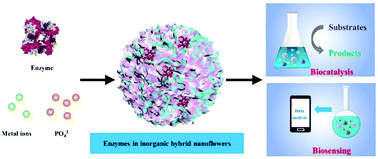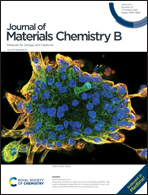Immobilized enzymes in inorganic hybrid nanoflowers for biocatalytic and biosensing applications
Abstract
Enzyme immobilization has been accepted as a powerful technique to solve the drawbacks of free enzymes such as limited activity, stability and recyclability under harsh conditions. Different from the conventional immobilization methods, enzyme immobilization in inorganic hybrid nanoflowers was executed in a biomimetic mineralization manner with the advantages of mild reaction conditions, and thus it was beneficial to obtain ideal biocatalysts with superior characteristics. The key factors influencing the formation of enzyme-based inorganic hybrid nanoflowers were elucidated to obtain a deeper insight into the mechanism for achieving unique morphology and improved properties of immobilized enzymes. To date, immobilized enzymes in inorganic hybrid nanoflowers have been successfully applied in biocatalysis for preparing medical intermediates, biodiesel and biomedical polymers, and solving the environmental or food industrial issues such as the degradation of toxic dyes, pollutants and allergenic proteins. Moreover, they could be used in the development of various biosensors, which provide a promising platform to detect toxic substances in the environment or biomarkers associated with various diseases. We hope that this review will promote the fundamental research and wide applications of immobilized enzymes in inorganic hybrid nanoflowers for expanding biocatalysis and biosensing.

- This article is part of the themed collections: Biocatalysis: A cross-journal collection and Journal of Materials Chemistry B Recent Review Articles


 Please wait while we load your content...
Please wait while we load your content...